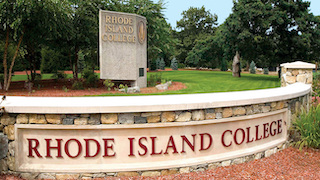
Rhode Island College Strategic Compass
It is with a sense of great privilege and pride that we share with the RIC community, and all our friends and supporters across the State of Rhode Island, the 2024 Rhode Island College Strategic Compass.


It is with a sense of great privilege and pride that we share with the RIC community, and all our friends and supporters across the State of Rhode Island, the 2024 Rhode Island College Strategic Compass.
The Rhode Island College Committee on College Mission and Goals was charged by President Jack Warner to “produce an organic, dynamic document to guide institutional decision-making and provide a strategic compass for the College.” The resulting strategic plan was a product of collaboration and campus engagement, developed through our model of shared governance.
This type of model ensures that all members of the campus community will be represented, and encourages collaboration across divisions and silos. As part of this process, we engaged with local, regional, and national expertise to help inform our work, but our most valuable relationship has been with the RIC community.

The strategic planning process offers opportunities for thoughtful and meaningful dialogue from not only the committee members, but also the broader RIC community. The Committee, throughout the strategic planning process, welcomed input to help guide its discussions of RIC’s mission, vision, and values.
A strategic planning digital space was created specifically for current RIC faculty, staff and students. This, and email communications, enabled the committee to regularly share information, updates, and news of opportunities and conversations in which employees and students were encouraged to participate.












